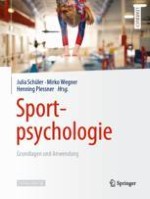2020 | OriginalPaper | Buchkapitel
16. Soziale Einflüsse durch Zuschauende im Sport
verfasst von : Bernd Strauß, Kathrin Staufenbiel
Erschienen in: Sportpsychologie
Verlag: Springer Berlin Heidelberg
Aktivieren Sie unsere intelligente Suche, um passende Fachinhalte oder Patente zu finden.
Wählen Sie Textabschnitte aus um mit Künstlicher Intelligenz passenden Patente zu finden. powered by
Markieren Sie Textabschnitte, um KI-gestützt weitere passende Inhalte zu finden. powered by
